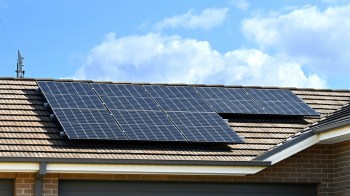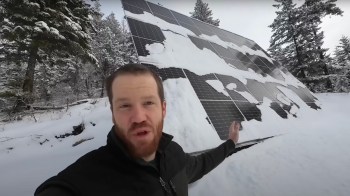Clean energy saves the Lone Star State millions of dollars each day –– money that would otherwise be spent on costly dirty energy.
2022 is a year of record-high fuel costs, with gas prices reaching over $7.00 per gallon in some parts of the country. But clean energy is shielding people from the rising cost of electricity, especially in Texas.
Everything is bigger in Texas, including savings from clean energy
With the state's seemingly never-ending heat wave this summer, Texas broke a record with high electricity demands. Amid looming fears of grid failure and blackouts, clean energy sources, like solar and wind power, stepped up to the plate and met the electricity demand.
Clean energy projects for solar and wind in Texas have saved the Lone Star State a whopping $20 million per day in fuel costs, estimates the Rocky Mountain Institute (RMI). This $20 million would have been used up by dirty energy plants to meet Texans' demands for electricity had clean energy not provided a portion of electricity for the state.
And the portion of electricity generated by wind and solar energy is not a small slice of the pie — the first six months of 2022, more than a third of the electricity came from solar and wind energy projects.
This allowed Texas to avoid spending more than $3 billion in fuel costs in the first half of this year, RMI estimated.
Save $10,000 on solar panels without even sharing your phone number Want to go solar but not sure who to trust? EnergySage has your back with free and transparent quotes from fully vetted providers that can help you save as much as $10k on installation. To get started, just answer a few questions about your home — no phone number required. Within a day or two, EnergySage will email you the best local options for your needs, and their expert advisers can help you compare quotes and pick a winner. |
Better yet, the estimates for the overall savings from avoiding the use of dirty energy to generate electricity exceed the average costs of wind and solar projects. In other words, these clean energies are already paying for themselves.
Clean energy sources are proving to be very productive even as demand skyrockets. The amount of money that Texas is saving suggests that clean energy is one of the most economical sources of electricity for our communities and states.
Costs for clean energy are reducing
The U.S. Department of Energy (DOE) set a goal in 2021 to reduce the cost of solar energy by 60% by 2030. This goal comes with nearly $128 million in new solar initiatives that will innovate and lower the cost of solar technologies.
The recent Inflation Reduction Act increases tax credits for electric vehicles (EVs), heat pumps, and solar panel systems. This bill also provides partial subsidies for efficient electric home appliances for low-income Americans. Additionally, the bill includes up to $7,500 in tax credits for new EVs or $4,000 for used EVs, a 30% tax credit for home solar panels, and up to $8,000 in savings on a new heat pump.
TCD Picks » Upway Spotlight
💡Upway makes it easy to find discounts of up to 60% on premium e-bike brands
Clean energy is becoming easier to access
Solar and wind are providing more electricity across the country.
Data from the U.S. Energy Information Administration (EIA) shows that from 2011 to 2021, the amount of electricity generated by wind turbines in the U.S. grew by 216%.
In this same period, electricity generation by solar grew an astounding 6,209%.
Both of these clean energy sources are setting records for production, showing no signs of slowing down.
The DOE projects that the wind energy industry will grow by over 250% by 2050, while the Solar Energy Industries Association expects that more than one in eight U.S. homes will have solar panels by 2030.
Continued advancements in wind and solar energy are lowering the cost and increasing the accessibility of clean energy.
The Texas-sized savings that the Lone Star State is experiencing right now is a testament to this accessibility.
Follow The Cool Down on Instagram and TikTok.













